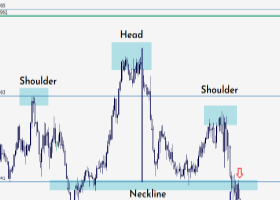EUR / USD Still Above 1.12, As Concerns Continue Grexit Burden
16 June 2015, 07:49
0
116
EUR / USD rose modestly on Monday, as weekend talks are not productive in the Greek debt crisis gives an indication of the furthest that the cash-strapped nation could default on sovereign debt.
The pair gained 0.0023 or 0.20% on Monday to 1.1283, remaining above 1.12 for the seventh consecutive session. EUR / USD traded between 1.1189 and 1.1295 on the day of choppy trading on Monday. Currency pairs tend to gain support at 1.1096, the low on June 7 and met with resistance at 1.1386, the high of June 10.
In Brussels, negotiations weekend between Greece and international creditors ended acrimoniously as the two sides failed to bridge wide gaps on issues ranging from pension reform, taxes and the level of the primary surplus. Greece ran out of time before the final part of the € 240.000.000.000 bailout ended on June 30.
It is unknown whether Greece has enough money in the emergency reserve fund to meet loan payments € 1.100.000.000 to the International Monetary Fund at the end of the month. The IMF insisted that Greece imposes significant cuts in pensions and impose higher Value Added Tax on electricity before agreeing to the deal.
"We must work out an emergency plan for Greece will fall into a state of emergency," the EU commissioner Germany Guenther Oettinger told reporters. "The supply of energy, pay police officers, medicines, pharmaceutical products, and many more (to be covered)."
On Monday, Greek 2 year yields jumped nearly 300 basis points to 26.6% as the possibility of a Greek deal reduced. Investors are awaiting Thursday's meeting of eurozone finance ministers in Luxembourg for further developments in the saga. Uncertainty spilled into the debt market as yields on 10-year bonds of Italy and Spain each earn at least 14 basis points to move above 2.3%. US 10-year yields fell three basis points to 2.358%.
US Dollar Index, which measures the strength of the greenback versus a basket of six other major currencies, was down 0.34% to 95.07, paring earlier gains amid mixed economic data.
The Federal Reserve's monthly index of industrial production fell 0.2% last month, below the low end of analysts' forecasts of a 0.1% gain. Manufacturing continued to weigh on the index, declined by 0.2% in May, marking the third negative reading in the last five months. Disadvantaged in consumer goods and construction spending contributed to poor readability. In addition, the General Business Conditions Survey Empire State Manufacturing Index fell 1.98 to May, well below the low-end of the forecast for a gain of 4.00.
At the same time, however, the National Association of Home Builders reported a five-point surge in the Housing Market Index for the 59 of May, significantly exceeded analysts' estimates high-end. Index received a boost from future sales, which jumped six points in reading to 69.
Investors are awaiting the start of the two-day Federal Open Market Committee on Tuesday for further instructions at the time that the much-anticipated rise in US interest rates. The Fed is widely expected to wait until September before raising its benchmark Fed Funds rate for the first time in nearly a decade.


